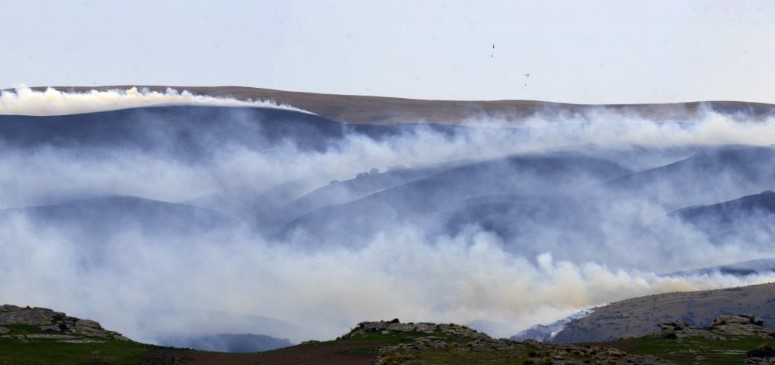About three-quarters of Dunedin's main water supply could be out of action for up to a year after a massive blaze engulfed an area near Middlemarch at the weekend.
Voluntary water restrictions will likely remain in place over summer after fire burned across 4664ha of land at Te Papanui conservation park on Old Dunstan Rd.
Water from the catchment was contaminated by ash and a small amount of run-off containing fire suppressant chemicals
Ninety firefighters will be back at the scene today along with infrared cameras to tackle hot spots, as an investigation into its cause begins.
At a media briefing in Dunedin yesterday, Mayor Aaron Hawkins said the fire had eliminated the use of the main water catchment for Dunedin, the Deep Stream Reservoir.
Water from the catchment was contaminated by ash and a small amount of run-off containing fire suppressant chemicals.
Both the Deep Stream Reservoir and Deep Creek Reservoir were of strategic importance for the Dunedin City Council, he said, as they were the only reservoirs that could supply water to all suburbs in Dunedin.
Dunedin residents were asked to voluntarily conserve water while the severity of the impact to the Deep Stream Reservoir was assessed in the coming weeks by council staff.
The voluntary water restrictions would most likely remain in place over the summer and more formal restrictions could be considered based on the weather over the coming months.
Mr Hawkins said the fire was a significant event, but would have been more severe without the efforts of firefighters.
Dunedin City Council 3 Waters group manager Tom Dyer said the Deep Creek Reservoir would become Dunedin's primary water source as a result of the fire.
Deep Stream would be out of action for anywhere from three months to a year, he said.
Dunedin's average water use was about 44,000 cubic metres a day, he said.
This would continue to be met from a range of treated water sources.

Up to 11 helicopters were battling the blaze near Middlemarch on Saturday afternoon.
At the briefing yesterday afternoon, Otago district principal rural firefighter Graeme Still said the fire had been contained, but hot spots existed.
At its peak on Saturday, 11 helicopters with monsoon buckets worked to extinguish the blaze working in the skies above four ground crews.
Fifteen millimetres of rain on Saturday night helped firefighting efforts.
The cause was still under investigation.
It marked the third major vegetation fire in Otago in the past week.
A fire at Cornish Point, near Cromwell, last Monday covered 8ha.
The cause was still under investigation.
A fire at Bucklands Crossing near Waikouaiti, which covered 16ha of land and was believed to have been caused by a vegetation burn-off reigniting, was extinguished yesterday.
A fire investigator would begin work today to establish the cause of the Middlemarch fire.
Fire crews were able to respond quickly because they had previously planned for a potential fire in the area, he said.
About 1100ha of the fire was on Department of Conservation land.
Winds of up to 100kmh, warm temperatures and no vehicle access to the area meant serious challenges for firefighters.
At its peak the fire was spreading across more than 1.5km of land per hour.
A normal rate would be about 300m an hour, Mr Still said.





